Articles
English
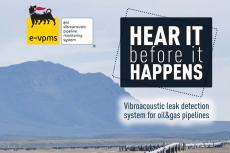
Versatile technology for Leak Detection, Third Party Interference and Integrity Assessment applications: Vibroacoustics
Leak detection, TPI (Third Party Interference) and asset integrity are crucial topics in pipeline monitoring, although they often require costly procedures and systems. In order to support the pipeline integrity management, Eni S.p.A, in collaboration with Solares JV, developed the e-vpms® (Eni Vibro-acoustic Pipeline Monitoring System).
This…

Editorial 5-2020
Dear readers,
You’ll certainly be familiar with this: you’re talking to friends, chatting about everything from your private life to your work life, and everyone is talking about their experiences of their workplace from their own perspective: What characterises it, what has changed and what has not?
I usually try to answer the question with an…
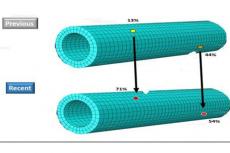
Advanced Corrosion Growth Modeling In Pipelines For Repair Optimization
Saudi Aramco operates a massive network to enable its position as world leading hydrocarbon producer, approximately 371 downstream cross-country pipelines with 446-sections, totaling 23,878 kilometers as at January 2020. Typical pipelines range in diameter from 4-inches to 56-inches, the average length of the pipelines ranges from less than one…

Detecting Illegal Tappings – A Research Case Study
Illegal hot tapping and product theft is a problem for pipeline operators all over the world.
As criminals use a wide range of different instal lations and are in many cases able to adopt t heir ways of siphoning and stealing to the pipeline conditions a research project had been started by GLD, together with another service company and two…
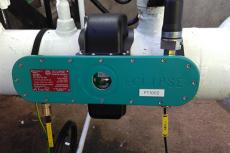
Leak & Theft Detection Strategies: Integrating Established And Innovative Technologies
Pipeline leak and theft detection can be done through various technologies. There is no si ngle best method as each pipeline is different and ideally, it is best to integrate several different methods within any detection system. Two of the most popular and established methods are flow balance and negative pressure wave, however, both have their…
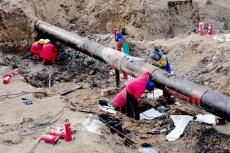
Novel Classification Of Leak Detection And Third-Party Intrusion Enabling Best-In-Class False Alarm Rate
We demonstrate PrismaFlowTM’s best in class events det ection and classification capabilities accompanied by negligible False Alarm Rate (FAR). A 35 km long pre-depl oyed optical cable inside a conduit was used as the sensor. Originally deployed for communication purposes, the optical cable, running along the infrastructure, was placed along…
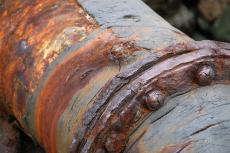
Stress Corrosion Cracking (SCC) Susceptibility Screening Enhancement
Stress Corrosion Cracking (SCC) is a wel l- known threat to the integrity of oil and gas pipelines. SCC is a damage mechanism that typically results in axial cracks on pipelines due to simultaneous action of tensile stress, potent environment (soil, coating, electrolyte etc.), and the pipeline material (poor microstructure). Small cracks are in…
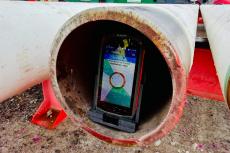
Translating Data Analytics Into Operational Instructions, An Innovative Smartphone App To Support Pipe Fit-Up Efficiency
Digital tools are everywhere in today’s worl d. The Oil & Gas sector is known to be slow to adapt, however has already been embracing the digital change since several years. A wide range of initiatives and solutions have been developed, from big data and related analytics to augmented reality and internet of things.
Digital tools aim to cover…
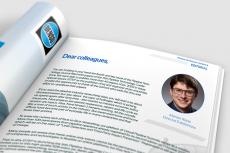
ptj-4-2020 Editorial
Dear colleagues,
You are holding in your hand the fourth and last issue of the Pipeline Technology Journal filled with papers of the 15th Pipeline Technology Conference. We were able to publish more than 40 papers of ptc 2020 in these special issues. EITEP as the publisher of ptj and organizer of ptc would like to take this opportunity to thank…
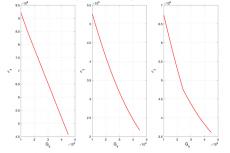
A new parametric study based on the Proper General ized Decomposition for the evaluation of the seismic vulnerability of buried pipelines
Pipelines related to industrial supplies such as oil or gas are a key p art of modern development, so it is important to ensure their appropriate response to a seismic action. The same applies to drainage or water supply in contemporary cities. Structural analysis of pipelines is a well-estab lished topic in engineering practice. In this paper, we…
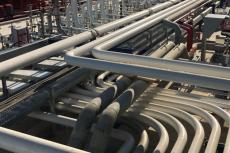
Adapting oil & gas infrastructures to climate change
It is well known that natural disasters which are related to climate change (e.g. rising sea levels, heat stress, extreme precipitation, inland and coastal flooding, landslides, water scarcity etc.) are rapidly increasing through last decades. Climate impacts not only show regional and seasonal patterns, but also differ between territorial…
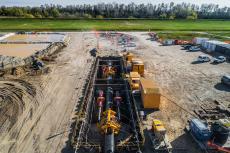
Europe´s Gas Supply Network: Key projects for trenchless methods and Pipe Express®
For the gas supply in Europe, a reliable pipeline network has the highest priority. Besides the construction of the main supply pipelines such as TurkStream and TAP, the fast and safe installation of the regional country-specific distribution networks like Eugal and Zeelink play a key role.
Different points of view of all involved parties have to…
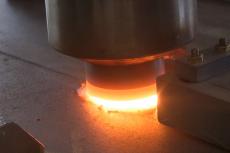
Friction Stir Welding of Steel for Pipeline Fabrication
Friction stir welding procedure development was initiated on steel grades S460 G2+M and S690QL1 in plate wall thicknesses of 10 and 15mm. To tackle the challenges of the high mechanical loads on the tool as well as its premature wear, a combination of preheating and optimized weld backing set-up was implemented. The inductive preheating allowed a…

Geo Augmented Visualisation for improving safe operations of Natural Gas Pipeline Network
A pipeline network is the most efficient and economical means of transporting hydrocarbons. Pipeline Operator’s objective is to operate and maintain pipeline network in such a way that it would continuously provide uninterrupted services to customers. Locating underground pipes and other infrastructure prior to excavation or repair has long been a…
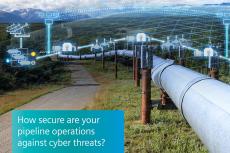
Key cyber-security controls for reliable pipeline operation
Our corporate public IT domains (like siemens.com) are constantly under cyber-attacks since they are connected to the public internet network. In a 2015 survey of 314 organizations operating Industrial Control Systems (ICS) around the world, 34 percent of respondents indicated that their systems were breached more than twice in the last 12 months…
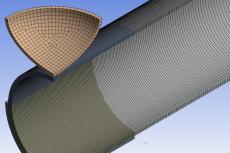
Large Stand-Off Magnetometry (LSM) for Buried Pipeline Inspection - Experimental study: Influence of dent depth on residual magnetic signal
Dents are among the anomalies which may be a threat to safe operation of pipelines. Dents are characterized by plastic deformation, which causes changes in the magnetic properties of the ferromagnetic pipe wall. Skipper NDT, a company at the forefront of LSM technology, conducted trials to characterize changes in magnetic properties around dents.…
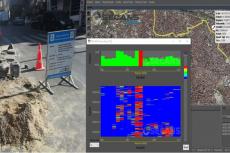
Machine Learning Approach to Distributed Acoustic Sensors (DAS) for Securing Pipelines in Urban Areas
Third party interference is one of the leading causes of pipeline failures and accidents that create great risk for safety and environment, as well as revenue loss for the operators. Especially in urban areas unauthorized and uncoordinated infrastructure and construction works pose serious threat to liquid and gas pipelines. Effective detection of…
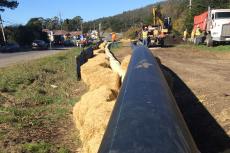
System Reliability Improved Through Fast-track Force Main Replacement
The Sewer Authority Mid-Coastside (SAM) transports and treats wastewater from several coastal communities in San Mateo County, California. In the spring of 2017, one of SAM’s force mains, the Granada Force Main, experienced a series of ruptures that disrupted operations and negat ively impacted local beaches. Due to its p revious history of breaks…
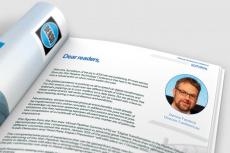
ptj-3-2020 Editorial
With this 3rd edition of the ptj in 2020 we are publishing 10 more articles from the 15th Pipeline Technology Conference that had to be restructured into a virtual event on short notice earlier this year.
The global pandemic is pushing us all to speed up digital transformation. For this reason, you could now see different kinds of online events…
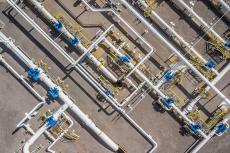
A Holistic Approach to Achieve Excellence in Pipeline Security Using „BISMA” & “SOLIDS”
One of subsidiaries of Pertamina is Pertamina Gas which manage special task in operating crude oil transportation 12,000 BOPD. In the operation still occur illegal tapping activities and risk of pipeline product theft is a major concern to industry. In 2012, oil thieves drilled 748 illegal taps or an average 2 times every day. Losses from…
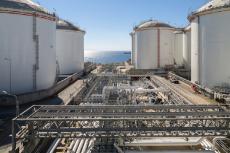
Design of tanks’ foundation and onshore pipeline against earthquakerelated geohazards in a coastal area in Northern Greece
The design of coastal oil and gasol ine tanks along with interconnected onshore and offshore pipeli ne in an area that is char acterized by very loose to loose gr anular and very soft to soft clayey soils, high water table and moderate or high seismicity will be much more demanding and challenging, since various issues are directly or indirectly…

Digitalization Projects for the Oil and Gas Industry
A new wave of digitalization is made possible by the combination of exhaustive int ernet access, computing power and storage capacity, artificial intelligence, big dat a, algorithmic autonomous decision making and r obotics. This ever accelerating digitalization is changing our life and the way we make business m ore than any other (r)evolution…
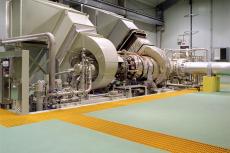
Hydrogen in Pipelines
Increasing the use of renewable energy requires new ap proaches to energy storage and energy transp ort. One of these approaches is to st ore and transport hydrogen in natural gas pip eline networks. Blending hydrogen into the existing natural gas pipeline network appears to be a strategy for storing and delivering renewable energy to markets.…
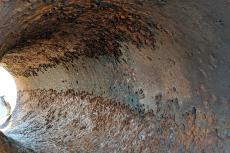
Lessons Learned on 20 years of challenges to internal corrosion protection of subsea pipelines-corrosion inhibitor or pH stabilization?
The three phase fluid of the massive South Pars reservoir under the Persian Gulf, is transmitted 100Km to onshore facilities via numerous 32” API 5L pipelines. The wet sour fluid cont ains 0.5 mol% of H2S and 1.7 mol% of CO2 which forms a hostile environment to carbon steel. Hence, as per form er laboratory researches at design stag e in about 20…
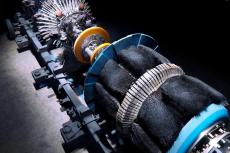
Maximising Accuracy Of MFL Pipeline Inspection
There have been significant advances in magnetic flux leakag e (MFL) in-line inspection (ILI) technologies in recent years. These have led to imp rovements in Probability of Detection (POD), Probability of Ide ntification (POI) and Probability of Sizing (POS).
Whilst often the main focus of these advancements is the inspection vehicle itself, the…

